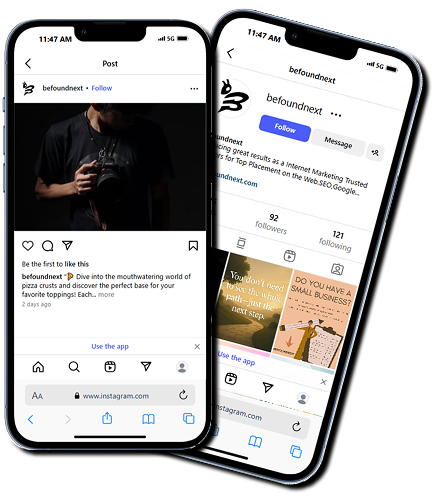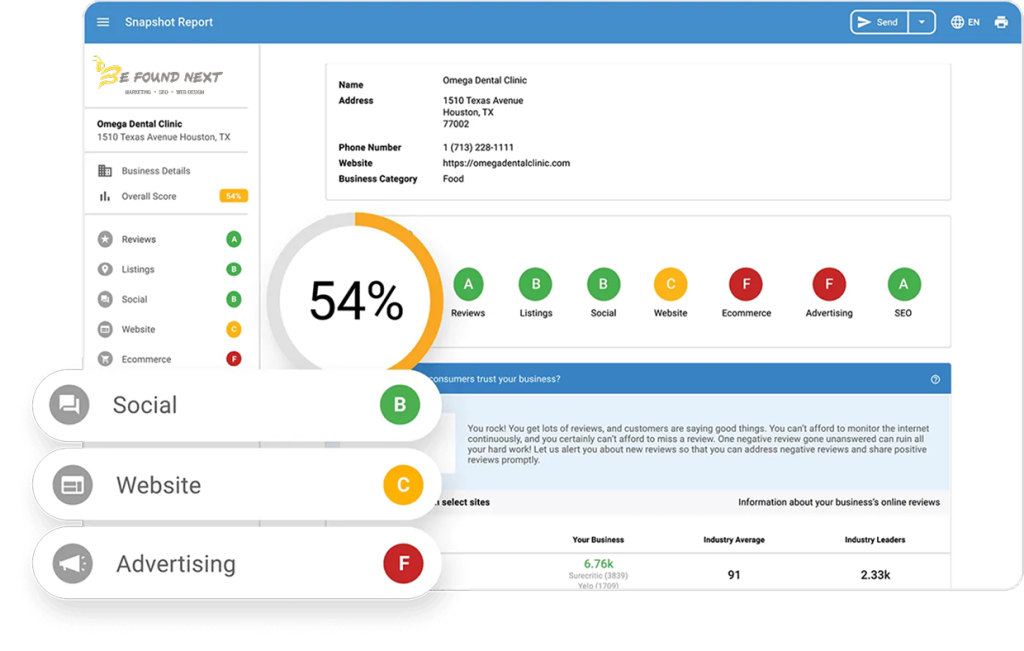Be Found Next — an independent Ohio
Digital Marketing Agency

Partner with our Ohio digital marketing agency to establish a strong local presence and become a market leader.
With our powerful internet marketing solutions, attract new customers and boost sales conversions. Your business will have a solid foundation so that it may dominate the local market first and become a local market leader.


About Internet Marketing
Innovative Strategies
Ohio digital marketing agency
Marketing yourself on the internet has become more important than ever before. These days, people find your business in a different way. Instead of asking their friends for a recommendation, they prefer to conduct a search on major search engines to learn more about your business. That’s why working with an experienced Ohio digital marketing agency can make all the difference in helping your business stand out online.
What We Do
Services We’re offering
to our Customers

The three search engine giants—Google, Yahoo, and Bing—all use local maps to bring users closer to nearby businesses. An experienced Ohio digital marketing agency can help your business stand out by optimizing your local listings and improving online visibility across all major platforms.

Internet Marketing is an umbrella term for all the online activities a business does to gain online visibility. Internet Marketing Ohio is a great example of how local companies consistently use digital strategies to attract customers, build their brand, and grow in a highly competitive environment.


Social Media Marketing has become the new norm in online promotions. As we all know, an Ohio digital marketing agency understands that social platforms are essential for reaching your audience, starting conversations, and building brand loyalty in an increasingly connected digital world.


Web Design is the digital face of your brand. A strong, responsive site builds trust, enhances credibility, and boosts engagement. An experienced Ohio web design company, paired with smart Internet Marketing Ohio strategies, helps you attract, engage, and retain more customers consistently.
Get Help from Our Social Media Experts
Where Other Agencies Stop, Our Ohio Digital Marketing Agency Goes Further.
We don’t just show up—we scale up. Here’s how we stand out:

Goal-First Strategy
Every move we make is tied to your business goals.

Results That Matter
We track real growth—leads, revenue, ROI.

Always Optimizing
Campaigns are tested and improved daily.

Real Experts, Real Support
No bots. Just hands-on, human help.

Creative That Converts
We blend stunning visuals with data-backed performance.
Get Help from Our Social Media Experts
Need a hand
managing your Social Media Marketing ohio
At Be Found Next, our team of seasoned social media experts is here to help your business grow and thrive. As a trusted Ohio digital marketing agency with years of experience supporting hundreds of clients, we offer tailored content creation and growth strategies designed to boost your online presence and engagement.

What’s Killing My Website
From Getting Found?


Snapshot Report will discover the biggest reason why your website isn’t helping you grow your business — and walk away with your exact next steps to fix it — in a customized report tailored to what YOU need most! Paired with expert Internet Marketing Ohio insights, this report becomes your roadmap to online growth and visibility.
Get Help from Our Social Media Experts
Partner with a Ohio digital marketing agency
Feeling overwhelmed managing your online presence? At Be Found Next, our experienced social media team is here to help you grow. We’ve supported hundreds of businesses just like yours with expert content creation, strategy, and ongoing growth solutions—all backed by proven Internet Marketing Ohio expertise.
Don’t just take our
word for it
Proven data and undeniable results demonstrate our expertise in driving our partners’ success. We champion setting clear, measurable goals, harnessing data-driven insights to achieve impactful outcomes and make strategic, informed decisions. Check out our Google Business Profile to see how we’re helping businesses grow.






